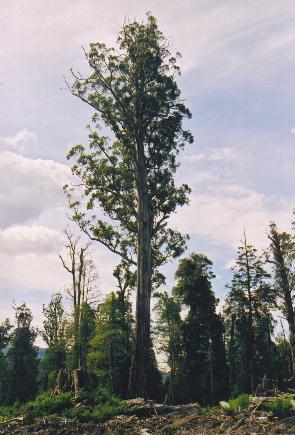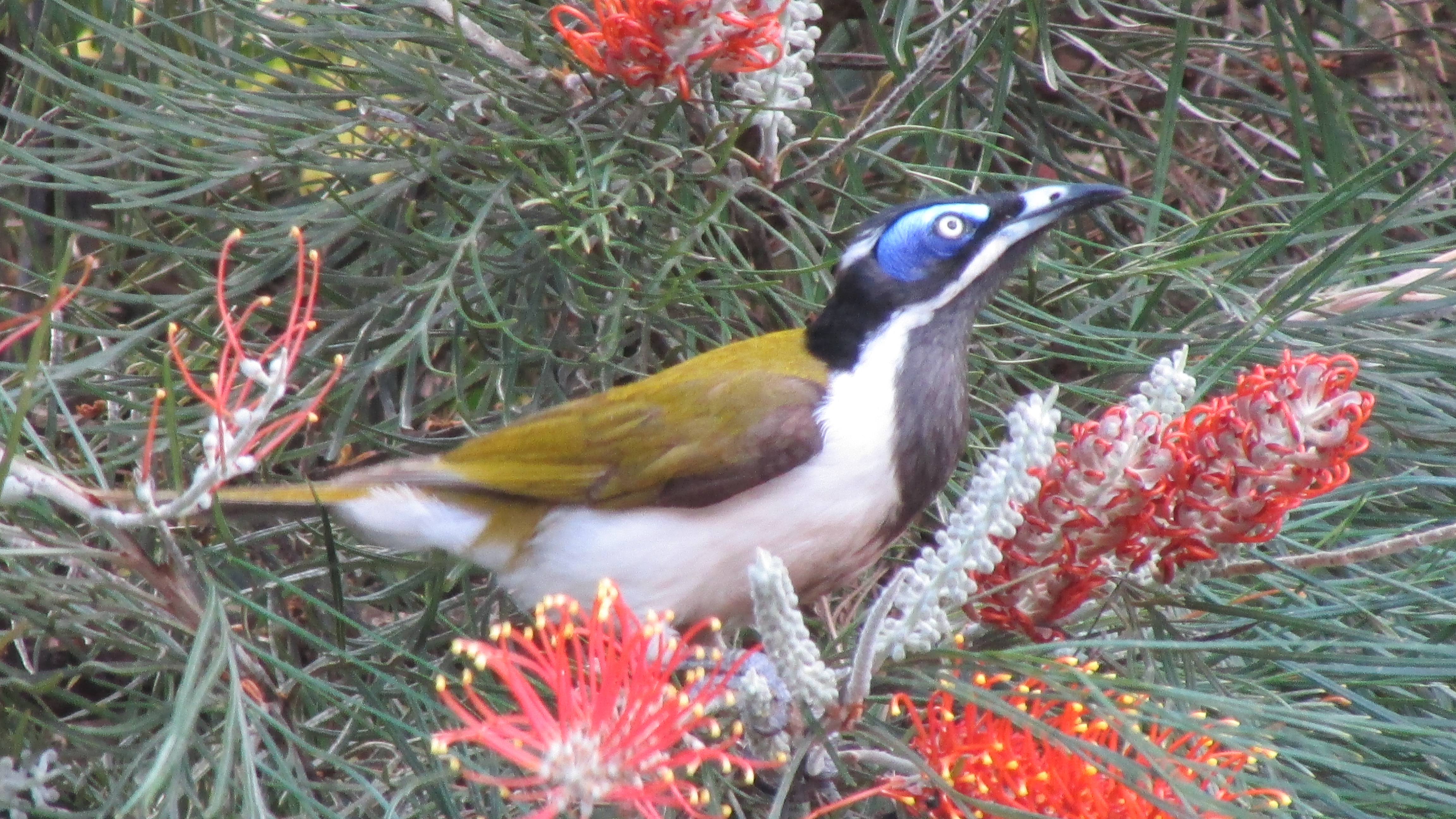|
Strong-billed Honeyeater
The strong-billed honeyeater (''Melithreptus validirostris'') is a species of bird in the family Meliphagidae. It is one of two species of the genus '' Melithreptus'' endemic to Tasmania. Its natural habitat is temperate forest. Taxonomy The strong-billed honeyeater was first described by ornithologist John Gould in 1837. Its specific name is derived from the Latin words ''validus'' 'strong', and ''rostrum'' 'bill'. It is a member of the genus '' Melithreptus'', with several species of similar size and (apart from the brown-headed honeyeater) black-headed appearance, in the honeyeater family, Meliphagidae. Molecular markers show that the strong-billed honeyeater separated from the common ancestor of the brown-headed and black-chinned honeyeaters between 6.7 and 3.4 million years ago. The next closest relative outside the genus is the much larger, but similarly marked, blue-faced honeyeater. More recently, DNA analysis has shown honeyeaters to be related to the Pardalotidae ... [...More Info...] [...Related Items...] OR: [Wikipedia] [Google] [Baidu] |
John Gould
John Gould (; 14 September 1804 – 3 February 1881) was an English ornithologist who published monographs on birds, illustrated by plates produced by his wife, Elizabeth Gould (illustrator), Elizabeth Gould, and several other artists, including Edward Lear, Henry Constantine Richter, Joseph Wolf and William Matthew Hart. Because of his 1840s seven-volume series ''The Birds of Australia (Gould), The Birds of Australia'' and its updates he has been considered the father of bird study in Australia, and the Gould League in Australia is named after him. His identification of the birds now nicknamed "Darwin's finches" played a role in the inception of Darwin's theory of evolution by natural selection. Gould's work is referenced in Charles Darwin's book, ''On the Origin of Species''. Early life John Gould was born in Lyme Regis, the first son of a gardener. Both father and son probably had little education. After working on Dowager Lady Poulett's glass house, his father obtained ... [...More Info...] [...Related Items...] OR: [Wikipedia] [Google] [Baidu] |
Black-chinned Honeyeater
The black-chinned honeyeater (''Melithreptus gularis'') is a species of passerine bird in the family Meliphagidae. It is endemic to Australia. Two subspecies are recognised. Its natural habitats are temperate forests and subtropical or tropical dry forests. Taxonomy The black-chinned honeyeater was first described by John Gould in 1837 as ''Haematops gularis''. He also described what he called the golden-backed honeyeater (as ''Melithreptus laetior'') of northern Australia in 1875. Frederick George Waterhouse of the South Australian Museum had sent him four skins, writing of their beauty. Gould noted that it was clearly closely related to ''M. gularis'', but differed in its plumage and smaller size. Richard Schodde united them into a single species in 1975, though Hugh Ford queried this in 1986, as he felt the two forms were as distinct as the yellow-tinted and fuscous honeyeaters that had similar ranges. Schodde countered that the black-chinned and golden-backed honeyeaters s ... [...More Info...] [...Related Items...] OR: [Wikipedia] [Google] [Baidu] |
Endemic Birds Of Tasmania
Endemism is the state of a species being found only in a single defined geographic location, such as an island, state, nation, country or other defined zone; organisms that are indigenous to a place are not endemic to it if they are also found elsewhere. For example, the Cape sugarbird is found exclusively in southwestern South Africa and is therefore said to be ''endemic'' to that particular part of the world. An endemic species can also be referred to as an ''endemism'' or, in scientific literature, as an ''endemite''. Similarly, many species found in the Western ghats of India are examples of endemism. Endemism is an important concept in conservation biology for measuring biodiversity in a particular place and evaluating the risk of extinction for species. Endemism is also of interest in evolutionary biology, because it provides clues about how changes in the environment cause species to undergo range shifts (potentially expanding their range into a larger area or becomi ... [...More Info...] [...Related Items...] OR: [Wikipedia] [Google] [Baidu] |
Black-headed Honeyeater
The black-headed honeyeater (''Melithreptus affinis'') is a species of bird in the family Meliphagidae. It is one of two members of the genus ''Melithreptus'' Endemism, endemic to Tasmania. Its natural habitats are temperate forest and Mediterranean forests, woodlands, and scrub, Mediterranean-type shrubland, shrubby vegetation. Despite its name, the black-headed honeyeater eats predominantly insects. Taxonomy The black-headed honeyeater was described in 1839 as ''Eidopsarus affinis''. John Gould described it as ''Melithreptus melanocephalus'' in 1844, likely unaware of its earlier name. Molecular studies show that the black-headed honeyeater is most closely related to the white-naped honeyeater, and that their next closest relative is Gilbert's honeyeater. All are members of the genus ''Melithreptus'', with several species of similar size and (apart from the brown-headed honeyeater) black-headed appearance, in the honeyeater family, Meliphagidae. The next closest relative outs ... [...More Info...] [...Related Items...] OR: [Wikipedia] [Google] [Baidu] |
Eucalyptus Delegatensis
''Eucalyptus delegatensis'', commonly known as alpine ash, gum-topped stringybark, white-top and in Victoria as woollybutt,Second paragraph of Boland, Douglas J. (1985). "Taxonomic revision of Eucalyptus delegatensis R.T.Baker (Myrtaceae)". Australian Forest Research. 15: 173–181. Retrieved 28 May 2019. is a species of tree that is endemic to southeastern Australia. It has a straight trunk with rough, fibrous to stringy bark on the lower half of the trunk, smooth white bark above, lance-shaped to curved adult leaves, flower buds in groups of between seven and fifteen, white flowers and barrel-shaped or hemispherical fruit. Description ''Eucalyptus delegatensis'' is a tree that typically grows to a height of , sometimes to , and forms a lignotuber. The bark is rough, grey to black, fibrous or stringy on the lower half of the trunk, smooth white to greyish above. Young plants and coppice regrowth have broadly lance-shaped to egg-shaped leaves long and wide. Adult leaves are lanc ... [...More Info...] [...Related Items...] OR: [Wikipedia] [Google] [Baidu] |
Eucalyptus Regnans
''Eucalyptus regnans'', known variously as mountain ash (in Victoria), giant ash or swamp gum (in Tasmania), or stringy gum, is a species of very tall forest tree that is native to the Australia states of Tasmania and Victoria. It is a straight-trunked tree with smooth grey bark, but with a stocking of rough brown bark at the base, glossy green, lance-shaped to curved adult leaves, flower buds in groups of between nine and fifteen, white flowers, and cup-shaped or conical fruit. It is the tallest of all flowering plants; the tallest measured living specimen, named Centurion, stands 100 metres (328 feet) tall in Tasmania. It often grows in pure stands in tall wet forest, sometimes with rainforest understorey, and in temperate, high rainfall areas with deep loam soils. A large number of the trees have been logged, including some of the tallest known. This species of eucalypt does not possess a lignotuber and is often killed by bushfire, regenerating from seed. Mature forests dom ... [...More Info...] [...Related Items...] OR: [Wikipedia] [Google] [Baidu] |
Meliphagoidea
__NOTOC__ Meliphagoidea is a superfamily of passerine birds. They contain a vast diversity of small to mid-sized songbirds widespread in the Austropacific region. The Australian Continent has the largest richness in genera and species. Systematics This group was proposed based on the phenetic DNA-DNA hybridization studies of Charles Sibley ''et al.''. A more modern definition of a monophyletic Meliphagoidea based on cladistic analysis was made by ornithologists at the American Museum of Natural History.Barker, F. Keith; Cibois, Alice; Schikler, Peter A.; Feinstein, Julie & Cracraft, Joel (2004): Phylogeny and diversification of the largest avian radiation. ''PNAS'' 101 (30): 11040–11045. PDF fulltext Families *Family Maluridae: fairy-wrens, emu-wrens and grasswrens *Family Dasyornithidae: bristlebirds. Formerly in Acanthizidae. *Family Acanthizidae: scrubwrens, thornbills and gerygones *Family Pardalotidae: pardalotes (but see below) *Family Meliphagidae: honeyeaters Th ... [...More Info...] [...Related Items...] OR: [Wikipedia] [Google] [Baidu] |
Maluridae
The Australasian wrens are a family, Maluridae, of small, insectivorous passerine birds endemic to Australia and New Guinea. While commonly known as wrens, they are unrelated to the true wrens. The family comprises 32 species (including sixteen fairywrens, three emu-wrens, and thirteen grasswrens) in six genera. Taxonomy and systematics As with many other Australian creatures, and perhaps more than most, the species making up this family were comprehensively misunderstood by early researchers. They were variously classified as Old World flycatchers, Old World warblers, and Old World babblers. In the late 1960s, morphological studies began to suggest that the Australo-Papuan fairywrens, the grasswrens, emu-wrens and two monotypic wren-like genera from New Guinea were related and, following Charles Sibley's pioneering work on egg-white proteins in the mid-1970s, Australian researchers adopted the family name Maluridae in 1975. With further morphological work and the great ... [...More Info...] [...Related Items...] OR: [Wikipedia] [Google] [Baidu] |
Acanthizidae
Acanthizidae—sometimes called Australian warblers—are a family of passerine birds which includes gerygones, thornbills '' Acanthiza'', and scrubwrens '' Sericornis''. The family Acanthizidae consists of small to medium passerine birds, with a total length varying between . They have short rounded wings, slender bills, long legs, and a short tail. Most species have olive, grey, or brown plumage, although some have patches of a brighter yellow. The weebill is the smallest species of acanthizid, and the smallest Australian passerine; the largest is the pilotbird. Taxonomy and systematics Following the Sibley-Ahlquist taxonomy (1990) they were previously regarded as subfamily Acanthizinae within the family Pardalotidae. More recent molecular genetic studies do not support this arrangement. The Dasyornithidae (which include the bristlebirds) are variously seen either as subfamily Dasyornithinae within the family Acanthizidae or Pardalotidae or as own family (Schodde & Mason 1 ... [...More Info...] [...Related Items...] OR: [Wikipedia] [Google] [Baidu] |
Blue-faced Honeyeater
The blue-faced honeyeater (''Entomyzon cyanotis''), also colloquially known as the Bananabird, is a passerine bird of the honeyeater family, Meliphagidae. It is the monotypic taxon, only member of its genus, and it is most closely related to honeyeaters of the genus ''Melithreptus''. Three subspecies are recognised. At around in length, the blue-faced species is large for a honeyeater. Its plumage is distinctive, with olive upperparts, white underparts, and a black head and throat with white nape and cheeks. Males and females are similar in external appearance. Adults have a blue area of bare skin on each side of the face readily distinguishing them from juveniles, which have yellow or green patches of bare skin. Found in open woodland, parks and gardens, the blue-faced honeyeater is common in northern and eastern Australia, and southern New Guinea. It appears to be sedentary in parts of its range, and locally nomadic in other parts; however, the species has been little studied. ... [...More Info...] [...Related Items...] OR: [Wikipedia] [Google] [Baidu] |
Honeyeater
The honeyeaters are a large and diverse family, Meliphagidae, of small to medium-sized birds. The family includes the Australian chats, myzomelas, friarbirds, wattlebirds, miners and melidectes. They are most common in Australia and New Guinea, and found also in New Zealand, the Pacific islands as far east as Samoa and Tonga, and the islands to the north and west of New Guinea known as Wallacea. Bali, on the other side of the Wallace Line, has a single species. In total, there are 186 species in 55 genera, roughly half of them native to Australia, many of the remainder occupying New Guinea. With their closest relatives, the Maluridae (Australian fairy-wrens), Pardalotidae (pardalotes), and Acanthizidae (thornbills, Australian warblers, scrubwrens, etc.), they comprise the superfamily Meliphagoidea and originated early in the evolutionary history of the oscine passerine radiation. Although honeyeaters look and behave very much like other nectar-feeding passerines aroun ... [...More Info...] [...Related Items...] OR: [Wikipedia] [Google] [Baidu] |





